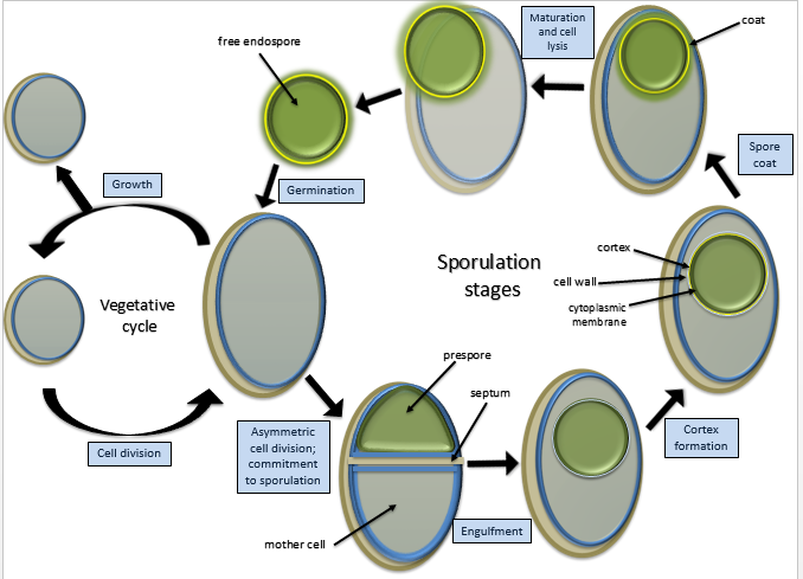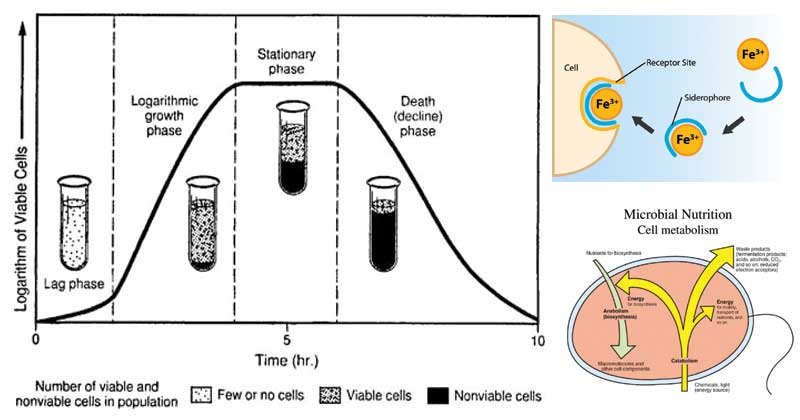Different Types of Culture Provide Nutrients for Microbial Growth
Tryptic Soy Agar TSY is a good all-purpose medium commonly used to grow bacteria in the microbiology laboratory. Allows for differentiation between different types of microbes usually based on color Differential Media Figure 69a.

Microbial Nutrition And Growth Scientist Cindy
The basic nutrient broth is the most commonly used.

. All the bacterial cells of the population are physiologically identical and in the same stage of cell division cycle at a given time. Used to isolate fungi. Different types of culture ____ provide nutrients for microbial growth and can be designed to support the growth of certain microbes while inhibiting the growth of others.
Used to suppress the growth of unwanted bacteria and encourage the growth of desired microbes. The chemicals and elements of this environment that are utilized for bacterial growth are referred to as nutrients or nutritional requirements. Microbes that grow and multiply in or on a culture medium.
Microbial Growth Culture Media Culture Medium. A culture medium must contain adequate nutrients to support bacterial growth. Must be sterile Contain appropriate nutrients Must be incubated at appropriate temperature Culture.
This is a liquid medium which allows the microorganisms to multiply and has the essential nutrients that are required for it. In comparison with defined media which are good for growing picky bacteria complex media can be thought of as a crowd-pleaser suitable for growing many different types of less fastidious microbes. There are specific terms associated with the source of each of these items to help define organisms.
A synchronous culture can be obtained either by manipulating environmental conditions such as by repeatedly changing the temperature or by adding fresh nutrients to cultures as soon as. Different types of culture _____ provide nutrients for microbial growth and can be designed to support the growth of certain microbes while inhibiting the growth of others media which of the following is described as a medium which has known quantities of every ingredient within it. Types of general culture media Defined media Complex media Selective media.
Many bacteria can be grown the laboratory in culture media which are designed to provide all the essential nutrients in solution for bacterial growth. Different types of culture ____ provide nutrients for microbial growth and can be designed to support the growth of certain microbes while inhibiting the growth of others media The visualization of bacteria requires the use of a compound ____ microscope. Broth media are used for the planktonic free-floating phase of microbial growth and agar media are used for the isolated colony or large biofilm phase of microbial growth.
It has been determined that in a closed system or batch culture no food added no wastes removed bacteria will grow in a predictable pattern resulting in a growth curve composed of four distinct phases of growth. In many cases predigested protein such as hydrolyzed soy protein serves this purpose and will support the growth of many different bacteria. A culture media or bacterial growth media is a type of medium that provides all the nutritional and energy requirements for bacterial growth in-vitro.
Used to isolate gram-negative Salmonella. However in some cases the specific nutrient requirement for certain types of bacteria is not known. It is usually composed of bacteria taken from a liquid source such as pond water.
Microbial Growth Culture Media Selective Media. All microbes have a need for three things. 4 Brilliant Green Agar.
The Enrichment Culture Media. The lag phase the exponential or log phase the stationary phase and the death or decline phase. For culture media because most microorganisms do not catabolize it break it down.
Its observed as turbidity in a broth or colonies on solid media. Another advantage of agar is its response to temperature changes. Minimally this would include organic compounds that can provide the building blocks necessary for cellular reproduction.
Unlike those containing gelatin or starch solidifying agents catabolized by many different types of microorganisms media made with agar will remain solid as microbial cultures grow. Bacteria that are symbionts or obligate intracellular parasites of other cells usually eucaryotic. A microbial _____ is defined as the growth of microorganisms in or on a nutrient medium.
Carbon energy and electrons. 4 Saborauds Dextrose Agar. Culture Medium - Nutrients prepared for microbial growth.
PH of 56 discourages bacterial growth. Additionally this growth curve can yield generation time for a. Green dye selectively inhibits gram-positive bacteria.
Synchronous culture is that in which the growth is synchronous ie. Nutrient material prepared for microbial growth in the laboratory. 6 rows The microbial cell is made up of several elements such as carbon oxygen hydrogen nitrogen.
Different types of culture _____ provide nutrients for microbial growth and can be designed to support the growth of certain microbes while inhibiting the growth of others. 11 Microbial Nutrition Nutritional Types of Microorganisms. Media _____ involves magnification lenses and techniques related to observing organisms invisible to the naked eye.
Liquid broth and solid agar forms of culture media provide different growth environments for microbes where the cells are either suspended in the broth or form colonies on the agar.

Microbial Growth An Overview Sciencedirect Topics

Microbial Growth And Nutrition

Bacterial Culture Media Classification Types Uses Microbe Online
Comments
Post a Comment